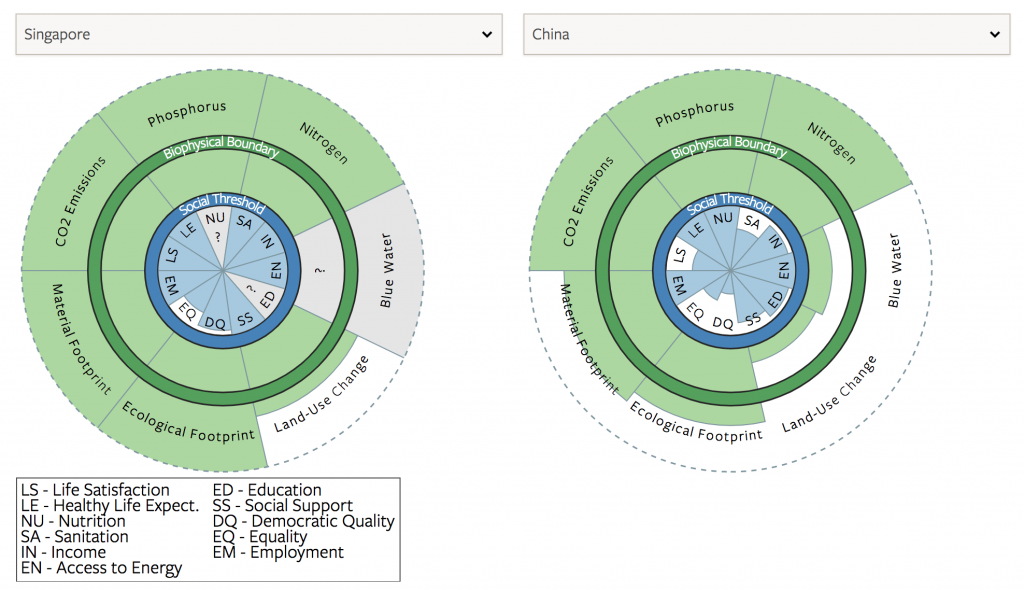What are some of the current issues confronting our world today? Amongst them, what is of interest and a cause of concern to you? (250 words)
The inconvenient consequences of a culture of convenience
Humans have always centered convenience as the motivation of most of their ideas since the industrial revolution, for example, the typewriter which has improved the efficiency and convenience of writing, the invention of “convenience foods” such as canned food or instant cake mix. The role of “convenience” in shaping the culture and economy of the last century, is both crucial and under-explored. With convenience in mind, I found out there are 3 issues that came from it.
1. Environmental issues:
I believe we are all guilty of choosing something convenient without thinking of the consequences that come after it. Single-use plastics, although it is beneficial for us momentarily, are here to stay on earth for a longer time than its useful lifespan. Some of the consequences are that the microplastics, which are from our contact lenses, may end up in our drinking water as they are too tiny to be filtered out. Another is that it endangers biodiversity. For example, turtles could mistaken plastic bags as jellyfish which are their main source of food which can cause intestinal blockage. This calls for concern as it may affect our health and affect our biodiversity (and more!) which results from our choice to be convenient at the moment.
Source: https://asunow.asu.edu/20181003-solutions-asu-researchers-plastics-pollution-recycling
2. Social issues:
“Most of the powerful and important technologies created over the past few decades deliver convenience in the service of personalization and individuality. Think of the VCR, the playlist, the Facebook page, the Instagram account. This kind of convenience is no longer about saving physical labor…It is about minimizing the mental resources, the mental exertion, required to choose among the options that express ourselves.”
According to the article by Tim Wu, he mentioned that although convenience has brought upon many life improvements for us, it has also taken away our individuality and character.
Sources: https://www.nytimes.com/2018/02/16/opinion/sunday/tyranny-convenience.html https://www.calnewport.com/blog/2018/03/03/tim-wu-on-the-tyranny-of-convenience/
3. Health issues:
Due to our hectic schedules, we often turn to frozen food or canned food for a quick meal to satisfy our hunger. However, we often forget that convenient meals do not contain as many nutrients as freshly cooked meals. Processed food is loaded with preservatives (MSG for example), unnatural coloring, and other added flavoring. If consumed regularly over time, such foods can quickly begin to harm a person’s health, which can contribute to serious health issues, for example – obesity, diabetes, heart disease, cancers, and strokes (Cardiff, 2013).
Source: https://www.onegreenplanet.org/natural-health/convenience-foods-not-so-convenient-for-your-health/
4. To preserve old buildings or develop new ones? (Social)
As Singapore has limited land, the old buildings of the past have to make way for the development of other architecture that may be more economical in order for it to progress. Many landmarks of the past like the Old National Theatre or the Old National Library are demolished to make way for city developments like the construction of expressways or tunnels. Recently, the “Papa Merlion” in Sentosa was also announced to be demolished for redevelopment works to introduce more attractions.
Will we forget these places of cultural significance as we progress towards the future? Where will we find a visual representation of our culture if physical buildings like these are being demolished to develop something that has more economical value? Will we become too focused on developing the land that we forget our roots?
Source: https://mustsharenews.com/places-gone-forever/
Of the many issues, I will be focusing on environmental issues that are caused by our need for convenience.
Why is the issue important? Who does it affect and how? (200 words)
The issue is important as it affects all of us! It affects our health (microplastics are found in our drinking water), it affects the land we live in (degradation of land), it affects the biodiversity that is needed to keep our ecosystem in balance (endangerment of wildlife on land or in water – oceans/lakes/rivers), and this is the only planet we can inhabit in! (We have no planet B!) Without taking care of our home, we won’t have a future, or even worse for some people, when we won’t have a future for us to earn more money. We have no reset button and the change we need to make is now as the UN urges that we only have 11 years to avoid potentially irreversible climate disruption.
Although many countries have made concrete plans to reduce plastic usage like China that plans to cut plastic use by 2025 and Thailand banning plastic bags this year (2020), more has yet to be done for Singapore. In 2018, only a small portion of plastic (4%) was being recycled due to the plastic having high levels of contamination, making it unsuitable for recycling. In 2018, 467 million PET bottles were used, (which is equivalent to 15 bottles per second!) and 820 million plastic bags were used from supermarkets (an average of about 145 bags per person!). Although Singapore has come up with initiatives to reduce plastic usage, they also recognise that Singaporeans have the culture of reusing the plastic bags as trash bags and a carrier for wet items. I would like to explore what more can be done to help reduce plastic usage in Singapore.
Sources: https://www.un.org/press/en/2019/ga12131.doc.htm https://www.straitstimes.com/asia/east-asia/china-reveals-plan-to-cut-plastic-use-by-2025 https://www.straitstimes.com/asia/se-asia/thailand-kicks-off-2020-with-plastic-bag-ban https://www.straitstimes.com/singapore/just-4-of-spores-plastic-waste-recycled-last-year https://www.channelnewsasia.com/news/singapore/singapore-single-use-plastics-resource-sustainability-bill-11872642
Who do you need to communicate to, and why? (150 words)
I will want to communicate with adults (aged 21 and above) to be more environmentally conscious of the decisions they make when they decide to prioritise a momentary convenience over their future. The reason why I decided to focus on adults is that they are the ones who can make a real change in shaping our future RIGHT NOW. (There is no time to lose!) As the UN said, we only have 11 years to avoid irreversible climate disruption. If the adults can make a change in their habits or lifestyle, the younger generation which is taught by them will naturally follow. Although it’s hard to expect one to change their lifestyles overnight, I believe that baby steps are better than no steps at all. Although ambitious, I also hope to bring across this reminder to leaders of organisations who can make a real (BIG!) difference in reducing the usage of single-use plastics and to consider other alternatives.
How has visual communication contributed to address the cause?
1. Doughnut Economics Diagram
The doughnut economics was created by Kate Raworth. It visualises what it takes to be in the 21st-century economy where we focus less on GDP growth but also on the Earth’s systems and its societies. It is a simple diagram that communicates the idea of assessing environmental sustainability and social performance across. If we use this to compare Singapore’s environmental sustainability and social performance to another country’s, we can easily see if Singapore is doing enough, or not.

Sources: https://goodlife.leeds.ac.uk/countries/#Singapore https://www.theguardian.com/commentisfree/2017/apr/12/doughnut-growth-economics-book-economic-model
2. Infographics about Recycling

3. NEA recycling guidebook for households
Link to guide: https://www.nea.gov.sg/docs/default-source/our-services/a-guide-to-3r-practices-for-households.pdf
4. Recycling apps in Singapore
5. Solutions overseas





